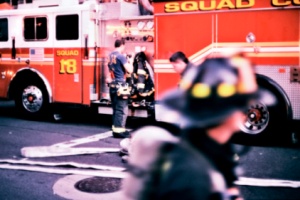 Fire prevention week may be past, but it’s not too late to reduce the risk of residential fires, according to the Electrical Safety Foundation International (ESFI) and the National Fire Protection Association (NFPA), who teamed up to bring information resources to the public.
Fire prevention week may be past, but it’s not too late to reduce the risk of residential fires, according to the Electrical Safety Foundation International (ESFI) and the National Fire Protection Association (NFPA), who teamed up to bring information resources to the public.
The focus this year is on preventing kitchen fires, because more fires start in the kitchen than in any other part of the home. The NFPA says equipment used in the kitchen causes 160,220 U.S. home structure fires per year, resulting in 386 reported civilian deaths, 5,002 civilian injuries, and $869 million in direct property damage.
NFPA’s 2013 campaign, “Prevent Kitchen Fires” raises awareness and teaches people how to prevent cooking fires before they start while the ESFI’s “Recipes for Kitchen Safety” resources identify risks associated with appliances commonly involved in kitchen fires, and will encourage safe electrical practices in the kitchen and throughout the entire home.
“While cooking is the leading cause of residential fires, it is important to also understand that correctible electrical hazards in the kitchen lead to fires as well, said ESFI President, Brett Brenner. “We applaud NFPA for creating a national platform to educate the public about the importance of fire safety, and hope that the public adopts safe cooking and electrical practices as a result.”
ESFI has created the Fire Prevention Week 2013 Toolkit, titled “Recipes for Kitchen Safety” to help recognize and anticipate dangers associated with common kitchen appliances. The handy “Recipes for Kitchen Safety” checklist encourages consumers to take inventory of the functionality of their safety devices to ensure that appliances avoid common fire hazards. Detailed tip sheets about Arc-Fault Circuit Interrupters (AFCIs) and Ground Fault Circuit Interrupters (GFCIs) further explain the importance of these safety devices and how to properly maintain them. Lastly, a detailed smoke alarm safety tip sheet ensures that the home is adequately protected by smoke alarms in case a fire occurs.
Additional ESFI resources include Virtual Fire Drill is an interactive demonstration that allows families to put their fire safety knowledge to the test while “escaping” from a simulated home fire. P.I. Plug’s Smoke Alarm Safety Video teaches children about the importance of smoke alarms as well as simple fire safety skills. Lastly, children can spread the word about fire safety by sending e-cards to their loved ones with topics including smoke alarm safety and cooking safety.
Learn more about kitchen fire safety and electrical fire prevention with the many videos and interactive activities available on ESFI’s website at www.esfi.org.
For more information about Fire Prevention Week, visit the NFPA website at www.firepreventionweek.org.


